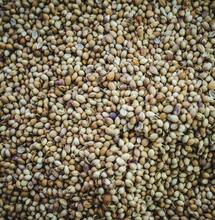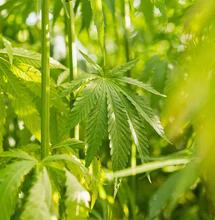Legal Weed Labels are Misleading Says New Study

A new study of nearly 90,000 strain samples across six legal U.S. states shows that labels used to distinguish cannabis, like indica, sativa and hybrid—tell consumers hardly anything about what's in their weed and could be misleading.
Published this month in the journal PLOS One the research forms the most comprehensive investigation to date of the chemical arrangement of cannabis products. The study found that commercial labels do not consistently match the strain's chemical make-up. As a result, the study's authors are now calling for a cannabis labelling system to be implemented that matches the Food and Drug Administration (FDA) approved labels used for food products.
It is ten years since the first 2 U.S states, Colorado and Washington, legalised recreational cannabis. Since that point, cannabis has evolved into a multi-billion dollar industry.
Today, the description of a strain is a big selling point. "Sativas'" are associated with imparting an energetic high on the user. "Indica" strains, however, are recommended for a more calming stone. It's crazy to think that despite this, no industry standard labelling system has been implemented.
Retail strain names like "Zkittlez", "Girl Scout Cookies", and "Bruce Banner" are well known. However, they can mislead customers into thinking that much like other commercial brand names like "Coca Cola" or "Jack Daniels", you'll get the same product and the same effect regardless of where you buy it. Unfortunately, this is not always the case.
Producers must typically divulge the levels of THC and CBD on their labelling. Still, they are not bound to list any information concerning other compounds such as terpenes. Terpenes are an essential part of a cannabis strain. They can, of course, influence the smell. Still, more importantly, terpenes are considered to have some impact on the effects of the strain, thanks to the "entourage effect". Likewise, they are free to name their products as they wish.
"A farmer can't just pick up an apple and decide to call it a Golden Delicious. A beer manufacturer can't just arbitrarily label their product a Double IPA. There are standards. But that is not the case for the cannabis industry," - co-author Nick Jikomes, director of science and innovation for Leafly.com.
To understand how similar same-named products across the country genuinely are, the team behind the research looked into a vast database of chemical analyses from cannabis testing centres. After examining around 90,000 samples by their cannabinoid and terpene profiles from six states, it was discovered that a large majority of the cannabinoids in recreational cannabis are THC.
When examining terpene content, the study found that cannabis products appear to fit into three different categories:
Strains high in caryophyllene and limonene.
Strains high in myrcene and pinene.
Strains high in terpinolene and myrcene.
The problem is that these terpene categories do not correspond to the indica, sativa and hybrid categories. In simple terms, a sample with the label "indica" may have the same terpene arrangement as strain samples labelled as "sativa" or "hybrid."
The biochemical similarity of products sharing the same commercial names appeared to vary depending on the strain.
"White Tahoe Cookies" were surprisingly consistent in a wide range of product samples. Others, however, were found to be consistently inconsistent. Durban Poison is one example. Overall there was more consistency amongst strains than the team expected.
The investigation results found that much of the recreational cannabis available in the United States is somewhat homogenous. As a result, the research proved an excellent opportunity to engineer new breeds with diverse chemical profiles. Strains that could be useful for not only recreational use but also medicinal use.
As the laws of prohibition slowly lift and more people begin to use cannabis for their health, accuracy in labelling cannabis products will become even more indispensable.
Ideally, cannabis products should be classified based on a thorough understanding of their chemical make-up. They should be labelled not only with details of their THC and CBD content but also their terpenes, flavonoids and additional compounds.
"It's like if your cereal box only showed calories and fat and nothing else. As consumers need to be pushing for more information. If we do that, the industry will respond." co-author Brian Keegan, assistant professor of Information Science at CU Boulder.


















